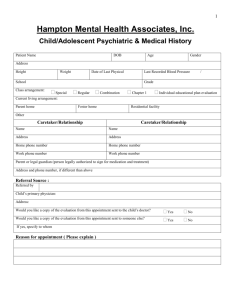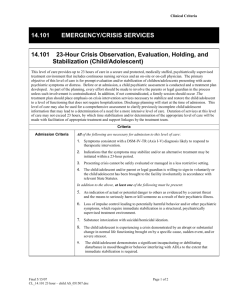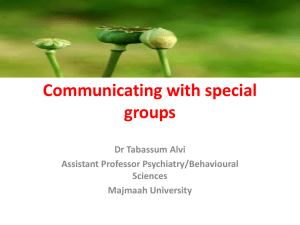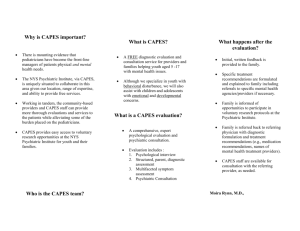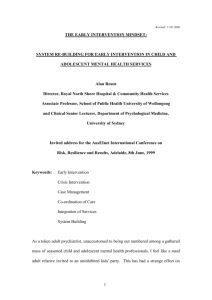Chapter 1 Child and adolescent psychiatric assessment Regarding
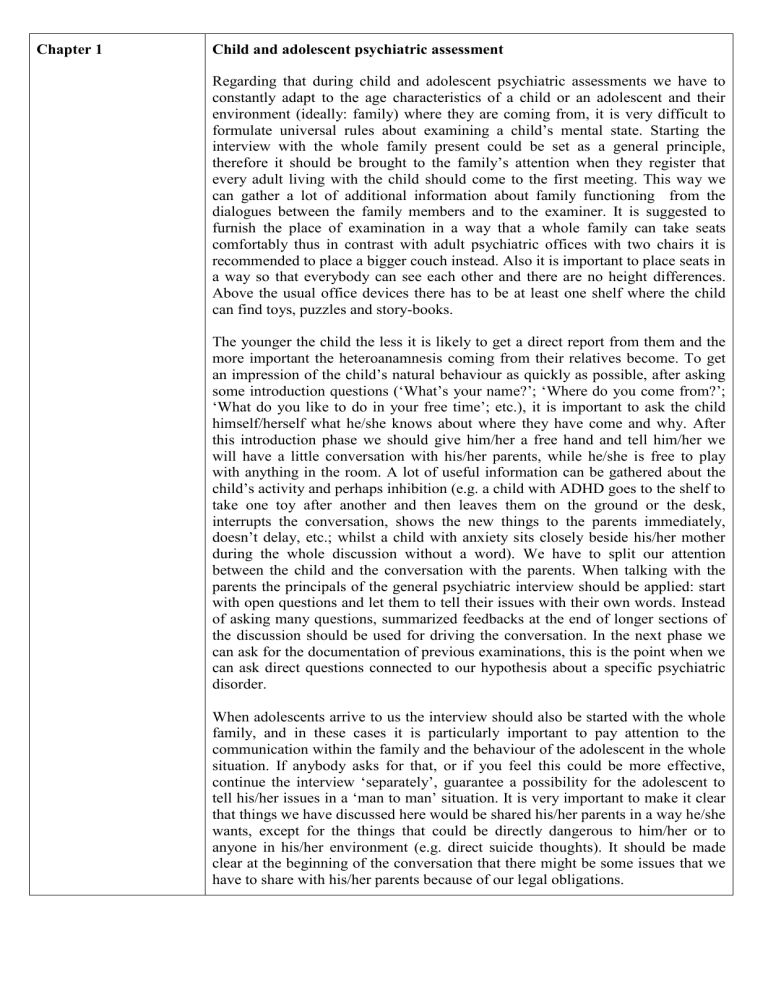
Chapter 1 Child and adolescent psychiatric assessment
Regarding that during child and adolescent psychiatric assessments we have to constantly adapt to the age characteristics of a child or an adolescent and their environment (ideally: family) where they are coming from, it is very difficult to formulate universal rules about examining a child’s mental state. Starting the interview with the whole family present could be set as a general principle, therefore it should be brought to the family’s attention when they register that every adult living with the child should come to the first meeting. This way we can gather a lot of additional information about family functioning from the dialogues between the family members and to the examiner. It is suggested to furnish the place of examination in a way that a whole family can take seats comfortably thus in contrast with adult psychiatric offices with two chairs it is recommended to place a bigger couch instead. Also it is important to place seats in a way so that everybody can see each other and there are no height differences.
Above the usual office devices there has to be at least one shelf where the child can find toys, puzzles and story-books.
The younger the child the less it is likely to get a direct report from them and the more important the heteroanamnesis coming from their relatives become. To get an impression of the child’s natural behaviour as quickly as possible, after asking some introduction questions (‘What’s your name?’; ‘Where do you come from?’;
‘What do you like to do in your free time’; etc.), it is important to ask the child himself/herself what he/she knows about where they have come and why. After this introduction phase we should give him/her a free hand and tell him/her we will have a little conversation with his/her parents, while he/she is free to play with anything in the room. A lot of useful information can be gathered about the child’s activity and perhaps inhibition (e.g. a child with ADHD goes to the shelf to take one toy after another and then leaves them on the ground or the desk, interrupts the conversation, shows the new things to the parents immediately, doesn’t delay, etc.; whilst a child with anxiety sits closely beside his/her mother during the whole discussion without a word). We have to split our attention between the child and the conversation with the parents. When talking with the parents the principals of the general psychiatric interview should be applied: start with open questions and let them to tell their issues with their own words. Instead of asking many questions, summarized feedbacks at the end of longer sections of the discussion should be used for driving the conversation. In the next phase we can ask for the documentation of previous examinations, this is the point when we can ask direct questions connected to our hypothesis about a specific psychiatric disorder.
When adolescents arrive to us the interview should also be started with the whole family, and in these cases it is particularly important to pay attention to the communication within the family and the behaviour of the adolescent in the whole situation. If anybody asks for that, or if you feel this could be more effective, continue the interview ‘separately’, guarantee a possibility for the adolescent to tell his/her issues in a ‘man to man’ situation. It is very important to make it clear that things we have discussed here would be shared his/her parents in a way he/she wants, except for the things that could be directly dangerous to him/her or to anyone in his/her environment (e.g. direct suicide thoughts). It should be made clear at the beginning of the conversation that there might be some issues that we have to share with his/her parents because of our legal obligations.

